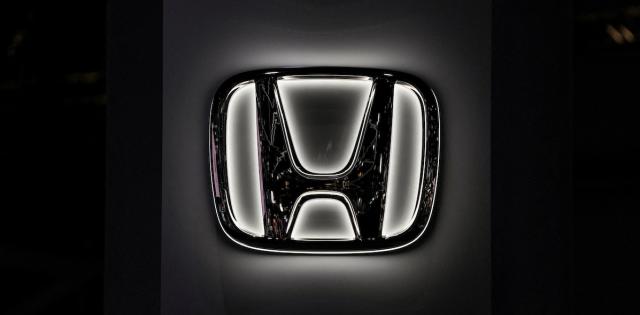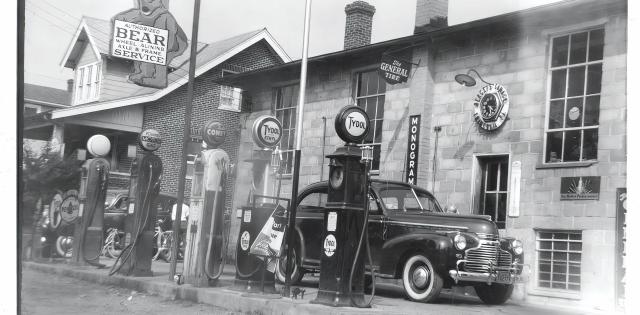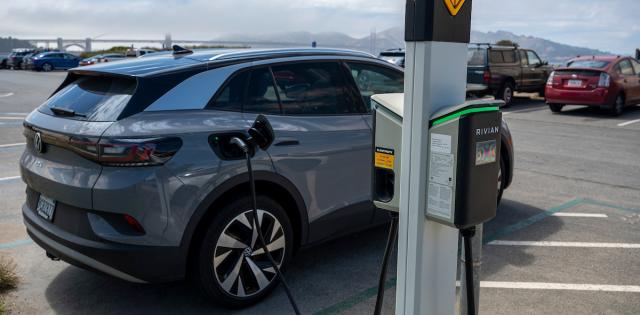The article below is sourced from Bloomberg Wire Service. The views and opinions expressed in this story are those of the Bloomberg Wire Service and do not necessarily reflect the official policy or position of NADA.
The United Auto Workers began a strike Friday against all three of the legacy Detroit carmakers, an unprecedented move that could launch a costly and protracted showdown over wages and job security.
After the midnight deadline for a new contract passed, workers walked out on a Ford Motor Co. plant in Michigan that makes Bronco SUVs, a General Motors Co. factory in Missouri that assembles Chevrolet Colorado pickups and a Stellantis NV plant in Ohio that builds Jeep Wrangler SUVs. The union and automakers are still far apart after weeks of talks.
The strategy of targeting individual plants is designed to methodically cut production of profitable vehicles while minimizing the impact on the UAW’s strike fund. The union said it will add strike locations depending on how bargaining progresses.
“Tonight, for the first time in our history, we will strike all three of the Big Three at once,” UAW President Shawn Fain said late Thursday. “This strategy will keep the companies guessing. It will give our national negotiators maximum leverage and flexibility in bargaining. And if we need to go all out, we will.”
President Joe Biden will deliver remarks on the negotiations between the union and automakers on Friday, the White House said in a statement.
GM shares rose 0.6% Friday to $33.86 as of 9:39 a.m. in New York. Ford climbed 0.1% and Stellantis gained 0.5%.
The muted reaction reflects uncertainty over how long the strike will drag on — and how much more widespread it will get.
“Stocks could express some degree of relief on Friday that the initial strike outcome wasn’t worse,” Citi’s Italy Michaeli and Justin Barell wrote in a note. “The pushback to that is that the UAW’s strike strategy — while perhaps not as disruptive as feared at the onset — does potentially signal a lengthier period of production disruption, and the situation of course remains fluid.”
GM Chief Executive Officer Mary Barra told CNBC Friday morning that the UAW strikes could be resolved “very quickly” after a “historic” offer from the automaker.
The UAW’s three-pronged attack comes amid a resurgence of labor activism in the US. Emboldened by tight labor markets and agitated by inflation and risks shouldered during the pandemic, unionized workers have notched a series of victories in the last year against t some of the most prominent US companies, including major railroads and United Parcel Service Inc.
An emailed Stellantis statement said it was “extremely disappointed” by the UAW leadership’s refusal to engage in negotiations. “We immediately put the company in contingency mode and will take all the appropriate structural decisions to protect our North American operations,” it said.
Ford said the union’s has made “little movement” from initial demands, which the company warned would give an extra boost to non-union rivals Tesla Inc. and Toyota Motor Corp.
The first walkout will shut down plants that make popular and profitable models, but spares factories that produce cash cows like the Ford F-150, Chevy Silverado and Ram pickups. That leaves the union the option to make more damaging moves if the strike drags on.
The union said 12,700 workers at three plants will be part of the initial action. UAW members will get $500 a week from the union in strike pay.
The effects of the strike could ripple across the economy, with parts suppliers expected to be hit as production comes to a halt at the three plants — and potentially others.
“Small and medium-sized manufacturers across the country will feel the brunt of this work stoppage, whether they are a union shop or not,” the National Association of Manufacturers said in a statement.
In Washington, politicians began to weigh in on the strike, including Vermont Senator Bernie Sanders and Michigan Senator Gary Peters, who said they would join the workers on the picket line.
“There will be some potentially economic toll, but it is going to be minor in comparison to the enhanced wages that thousands of workers are able to get to put back into the economy,” Peters told MSNBC Friday.
Representative Tim Walberg said “I don’t think it’s for members of Congress to decide what a good negotiation is and what the agreement should be.”
A lot of my constituents look at a 20% pay increase offered by General Motors as being unbelievable,” the Michigan Republican told CNBC. “Yet they as consumers are going to end up paying a good share of what this bargaining will be.”
New Leadership
Fain, the UAW’s new reformist leader, is making a high-stakes bet that he can win back benefits forfeited during the financial crisis more than a decade ago. The union has about 150,000 members at the three automakers, and they’re eager to share in soaring corporate profits as car prices have surged in the four years since the last contract was signed.
The UAW’s initial list of demands was projected to cost each of the companies $80 billion over four years, according to people familiar with the companies’ estimates. Both sides have amended their offers as they hash out issues including pay raises, cost-of-living adjustments, pensions for newer workers and job security at select factories.
UAW workers currently start around $18 an hour and can work to a top rate of $32 an hour, while temporary workers start at around $15 an hour.
Fain, who became the UAW’s first directly elected president this spring, is trying to restore trust after a federal corruption probe sent two former UAW leaders to jail.
Fain has struck a more adversarial tone with automakers than his predecessors while making negotiations more transparent by hosting regular bargaining updates on Facebook Live — at times theatrically tossing copies of the companies’ bargaining proposals in the trash.
A 40-day strike against GM in 2019 — the longest since the 1970s — cost the company about $3.6 billion in earnings before interest and taxes, according to RBC Capital Markets. The strike dented revenue up and down the automotive supply chain.
(Updates sixth paragraph with opening shares.)
--With assistance from Ian Kullgren, Keith Naughton and Ryan Teague Beckwith.
For more stories like this, bookmark www.NADAheadlines.org as a favorite in the browser of your choice and subscribe to our newsletter here:












